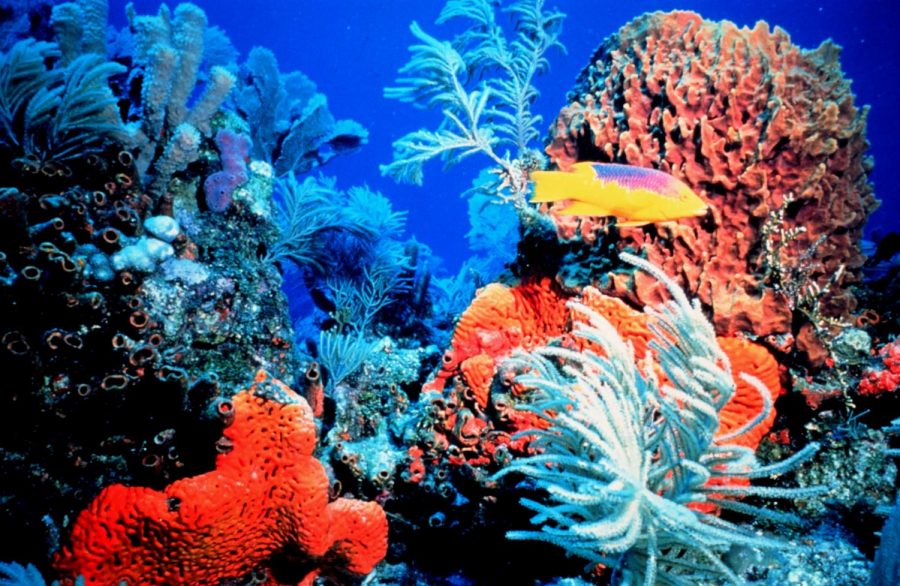Hawaii Installs Ban to Help Protect Coral Reefs
May 17, 2018
On May 1st, Hawaii passed a bill that bans sunscreen that contains the chemicals oxybenzone and octinoxate. Reasons behind this legislation are because research has shown that typical chemical sunscreen can wear off of the body and enter the ocean where these two chemical, oxybenzone and octinoxate, cause issues and problems for our great and wonderful coral reefs. Although sunscreen is not the only problem that is harming the coral reefs, this change should help the coral reefs recover more easily.
The problems these two chemicals create for the coral reefs is that they damage the coral and cause the coral to bleach and lose their color. While in the water, the sunscreen drifts off of the skin and floats around in the water. In highly tourist populated areas, these chemical zones could be massive and extremely harmful. Fish are able to swim away from these highly chemical concentrated areas, but coral are not mobile and remain in these toxic zones and become stressed and unable to reproduce.
Although researchers recently found out about how this type of sunscreen was negatively affecting the coral reefs, there are many other factors that are causing harm to these reefs. One big factor is climate change, in which the temperature of the sea rises and cause the water to acidify which bleaches the coral often. In proper living conditions, the coral provide shelter for algae and the algae provides a source of food to the coral in return, however, when coral becomes stressed by a change in the environment, the algae is expelled from the coral and become bleached.
Pollution, such as stormwater and untreated sewage, is also another factor that affects the coral reefs and damages them. Chemical sunscreens have just been recently recognized as a source of pollution.
If sunscreen is being banned, what other options are there left to protect your skin in Hawaii? Only chemical sunscreens are being banned, which leaves mineral sunscreens as an option. These mineral sunscreens are more environment friendly except for nano-forms of minerals which could harm the phytoplankton, an essential organism for ocean food webs.
What are the differences between chemical and mineral sunscreens? Chemical sunscreens are thinner which allow it to be more easily spread on the skin, less sunscreen is required to cover the skin, and more wearable for outdoor and activity use. Mineral sunscreens are thicker which requires more rubbing to even spread across the skin. They also wear off more easily which requires often reapplication, leave a white cast on the skin, and cause increased sweating during physical activities.
“I feel that this ban is necessary because it’s coral”, says Nairoby Mello (12th), “We should also use funds to help keep our oceans clean and reduce the amount of pollution.”
Hopefully, with the implementation of this soon to be law, the Hawaiian coral reefs could be improved by just changing the sunscreen being used and possibly more tourist populated areas could do the same to help keep our oceans clean and protect the sealife.
